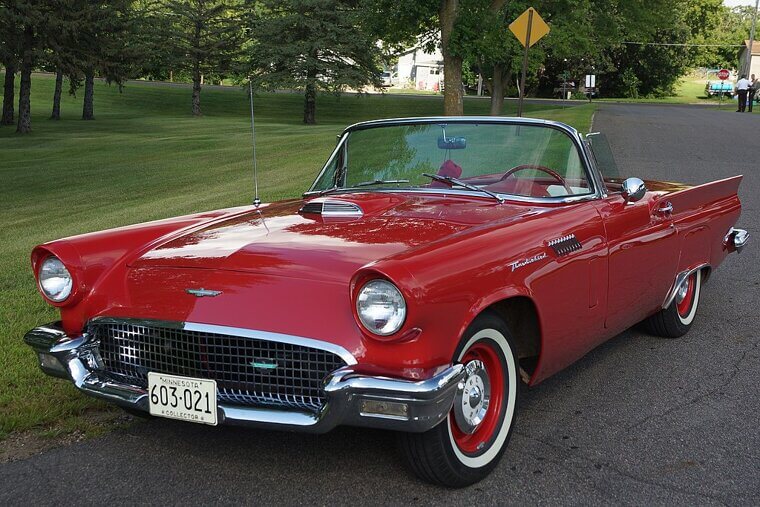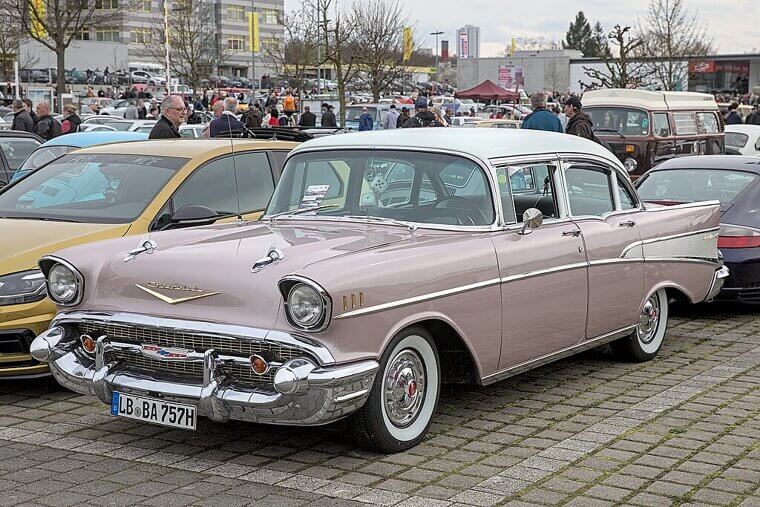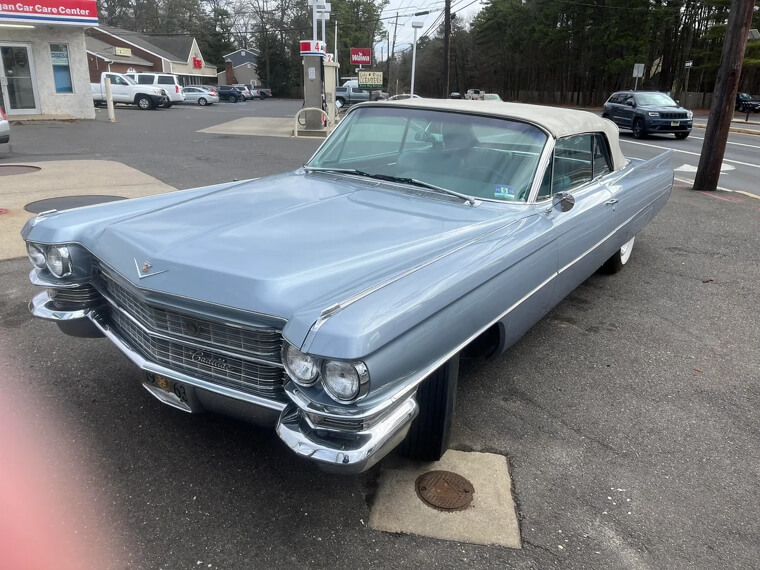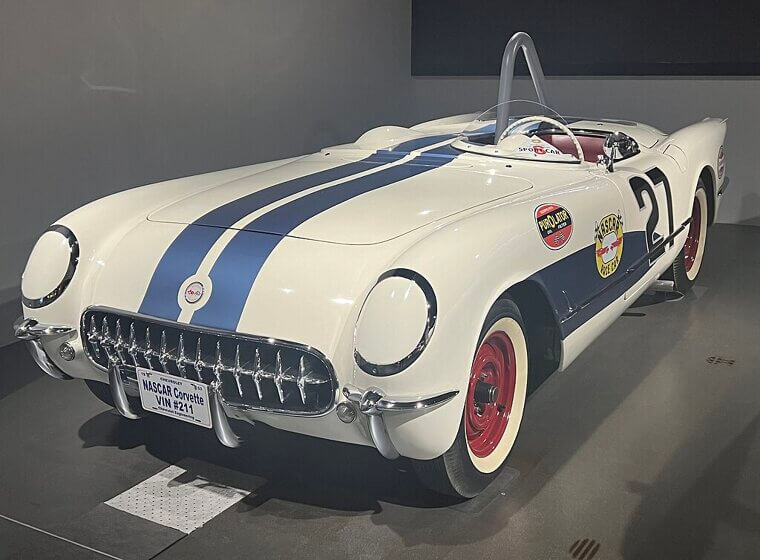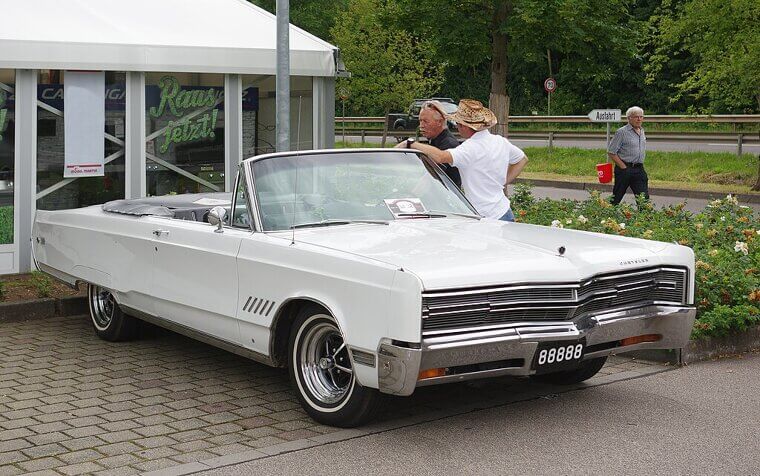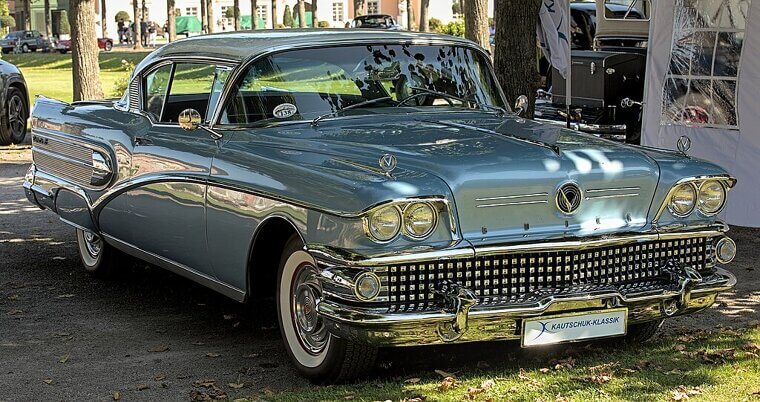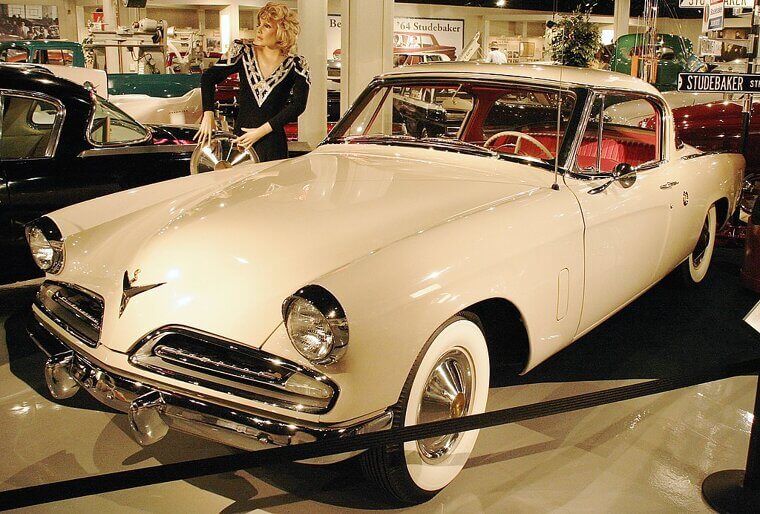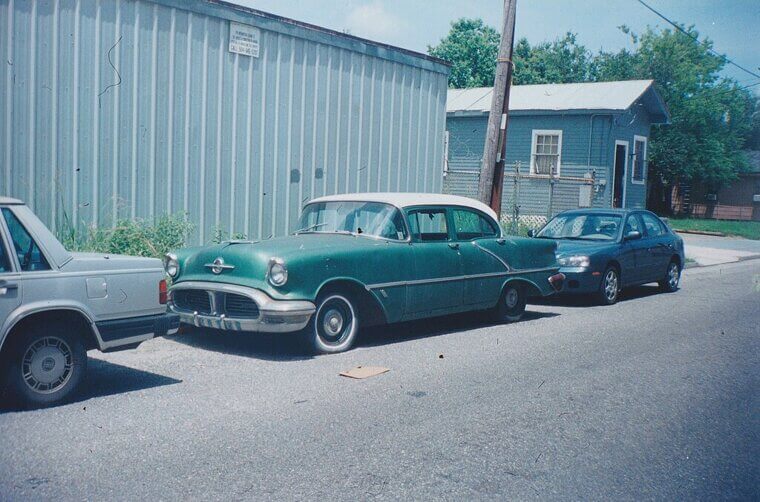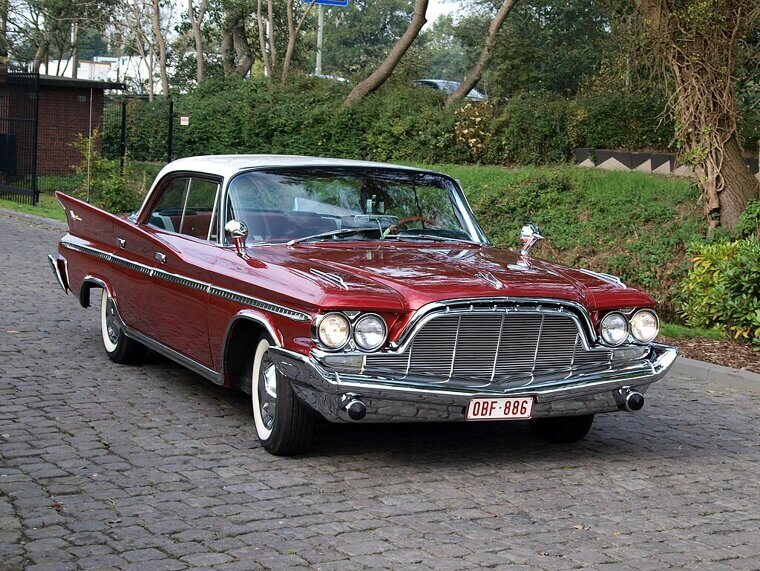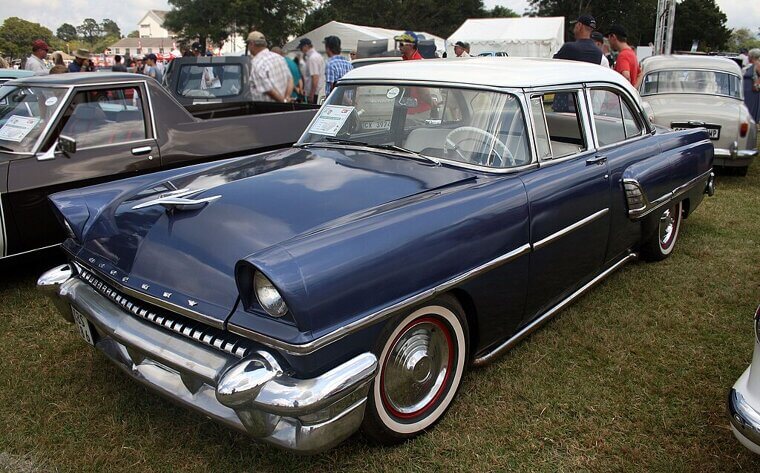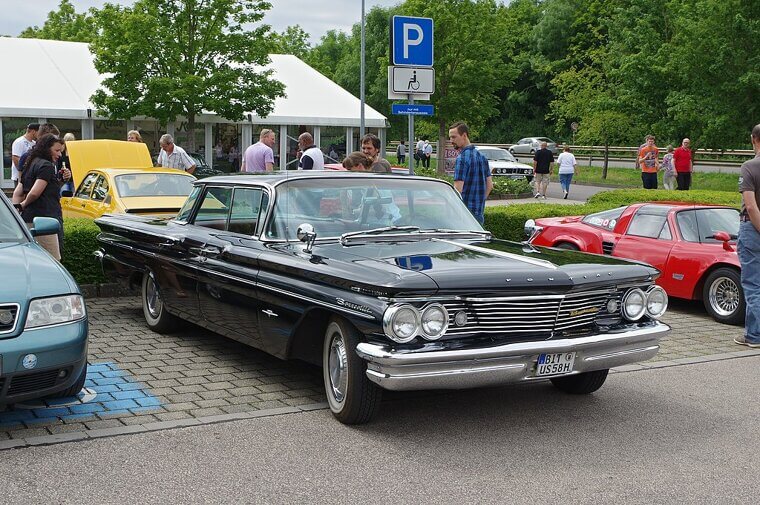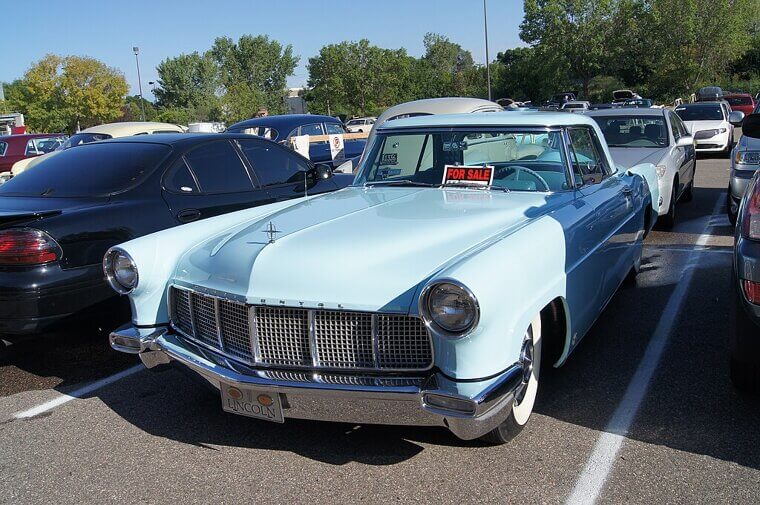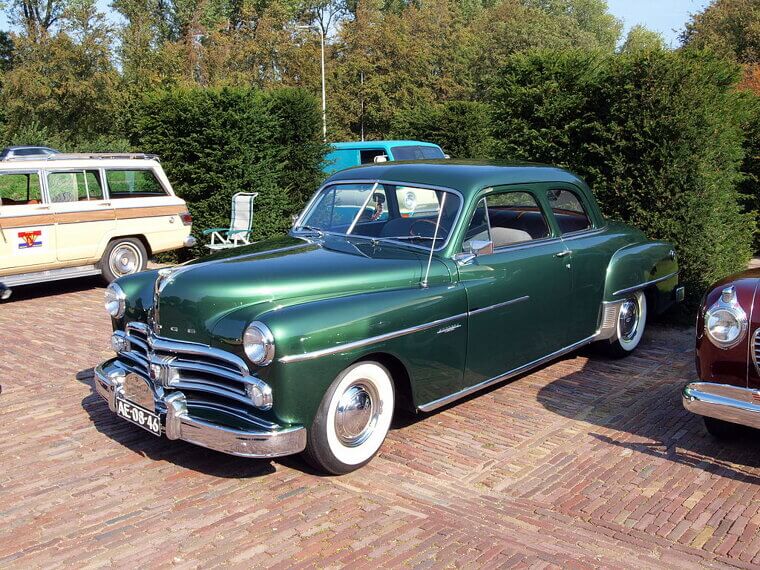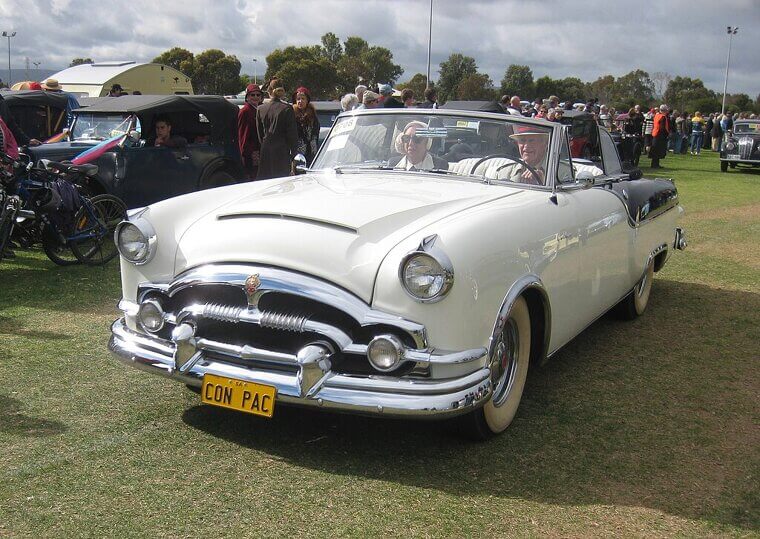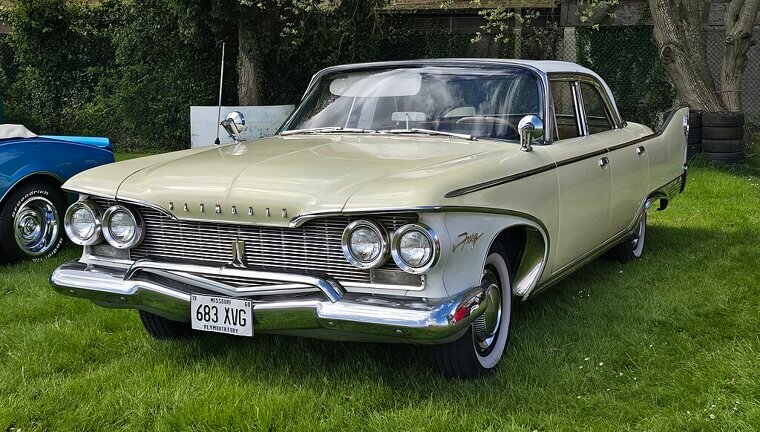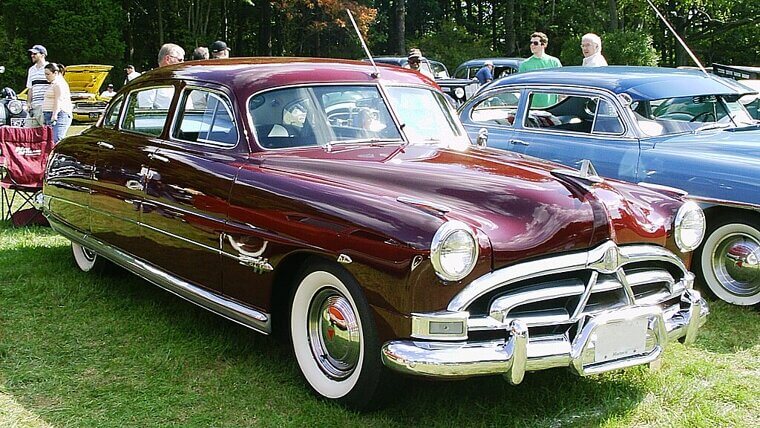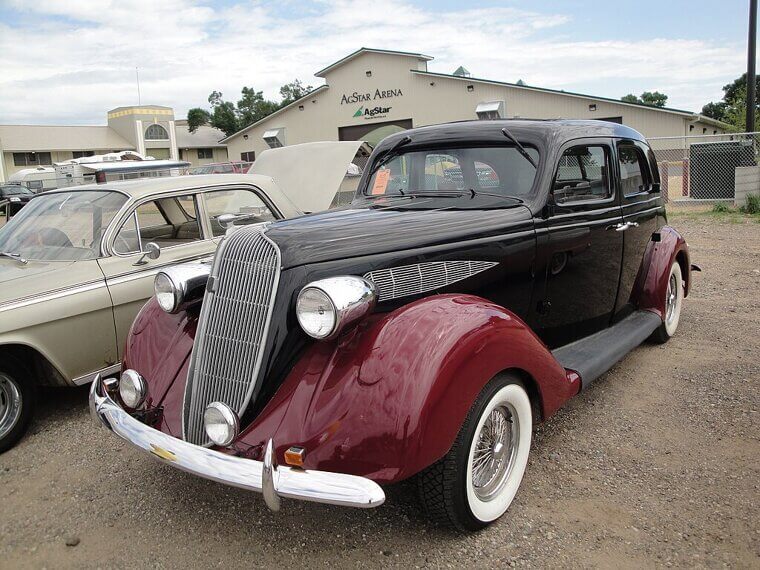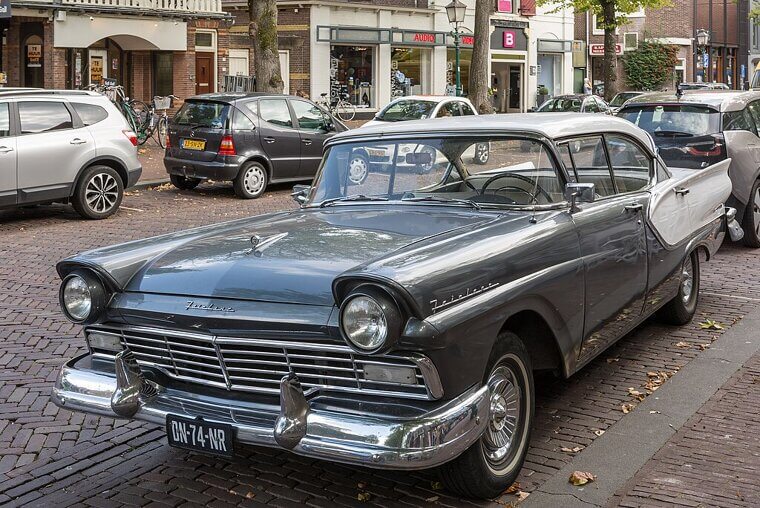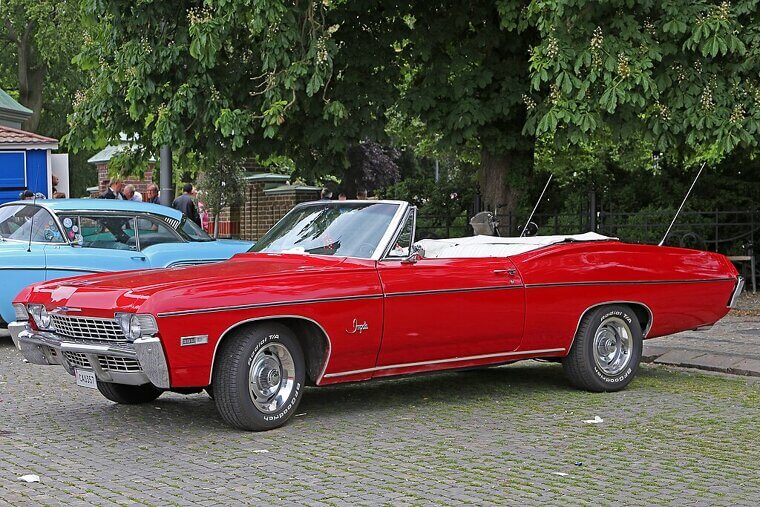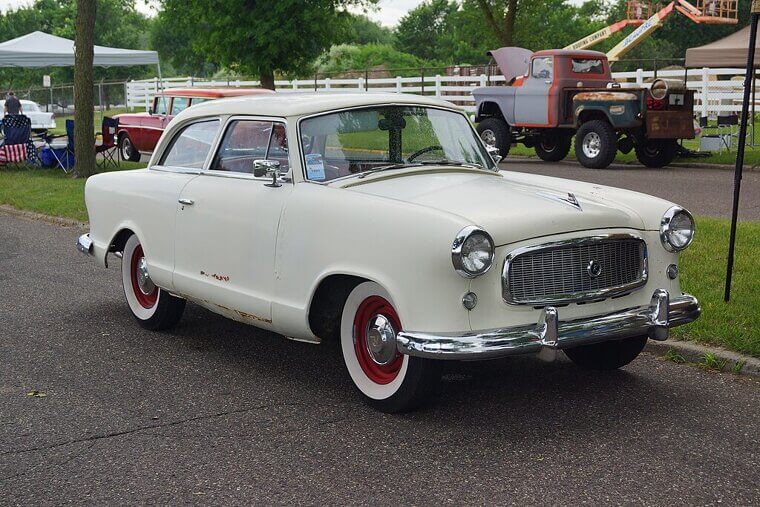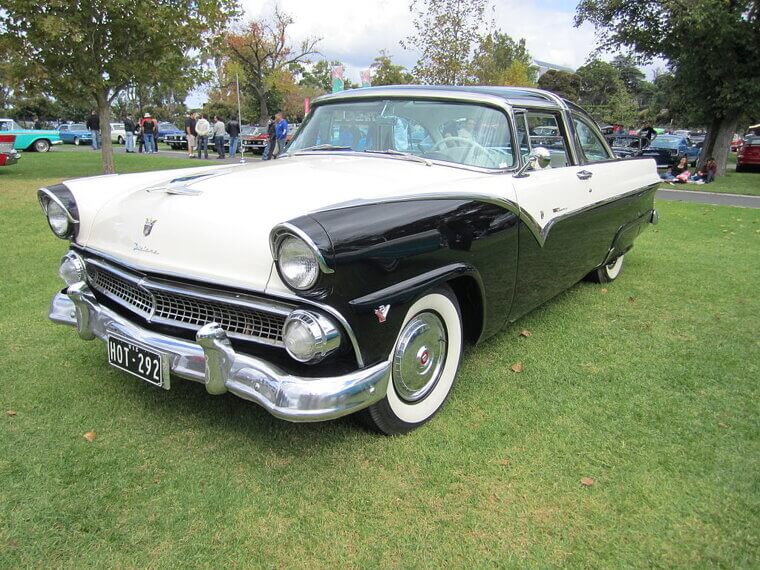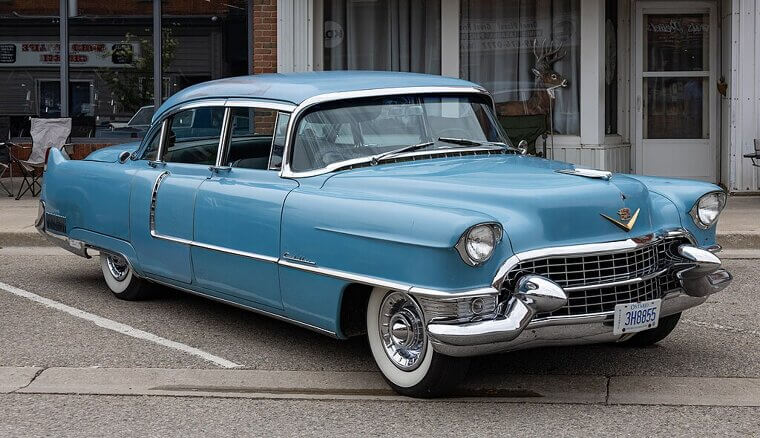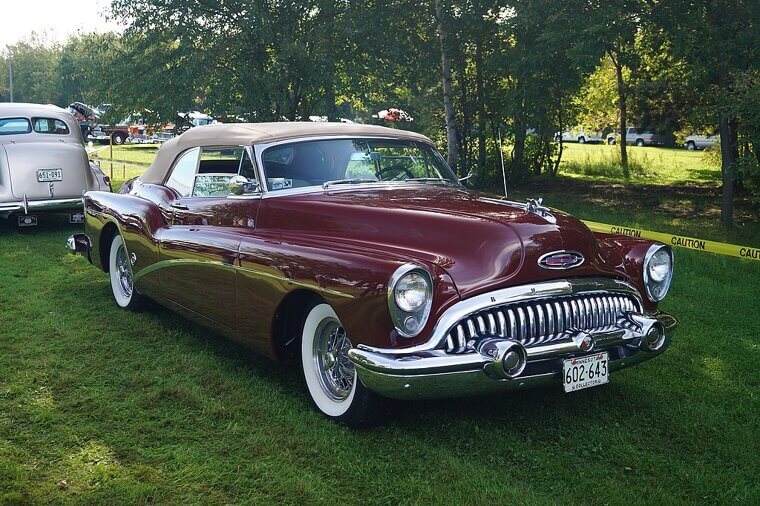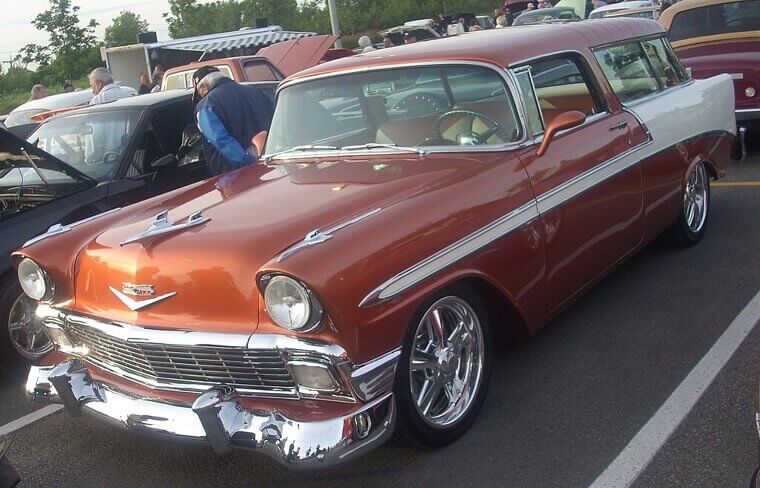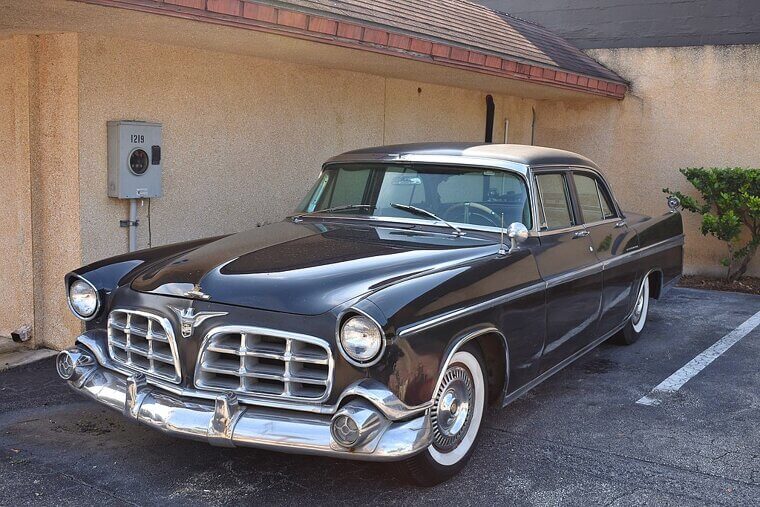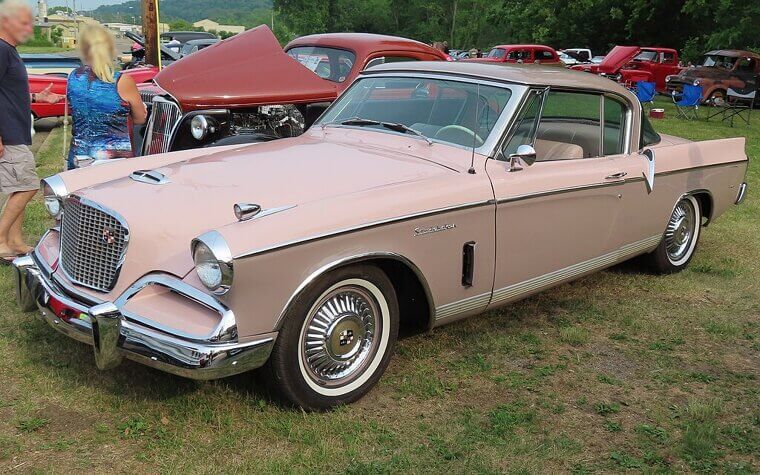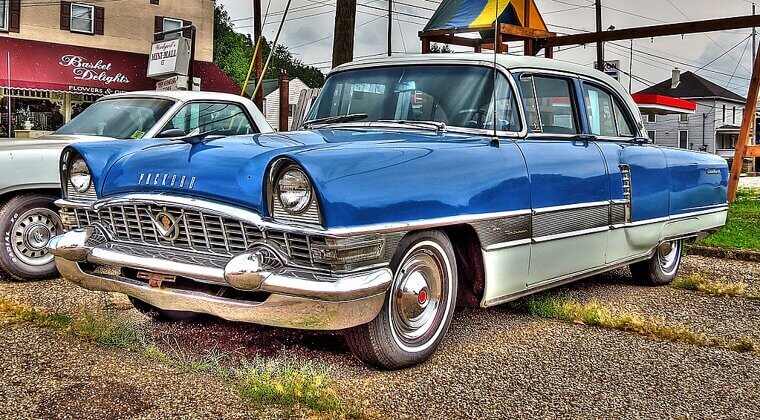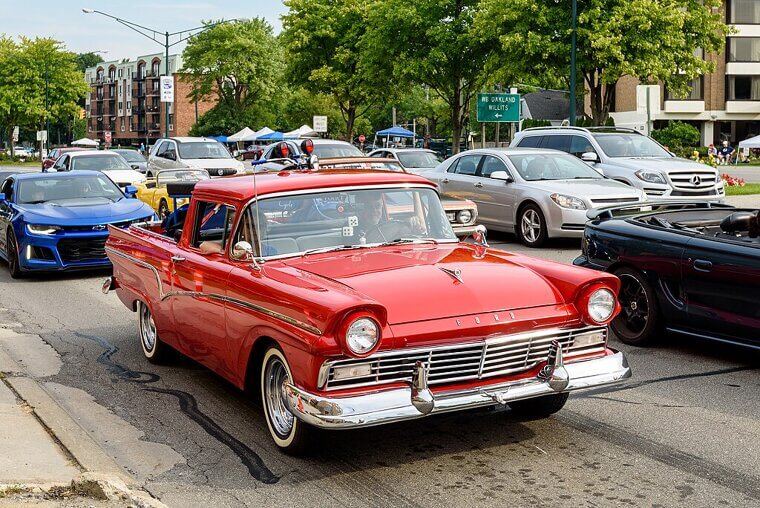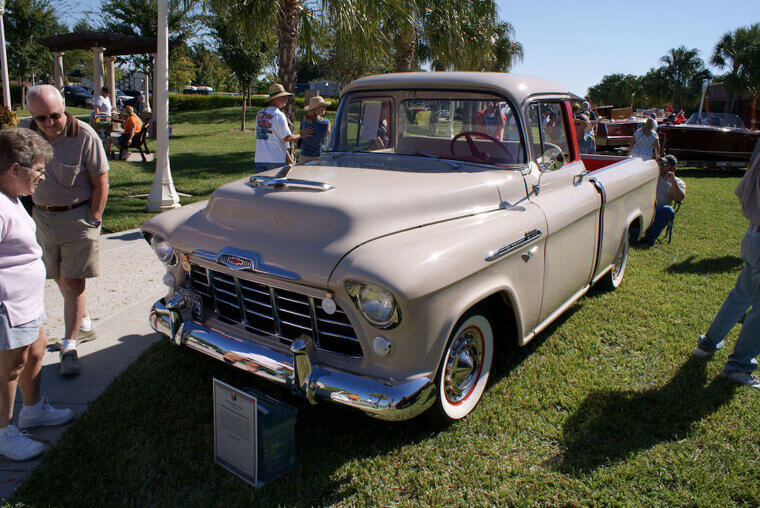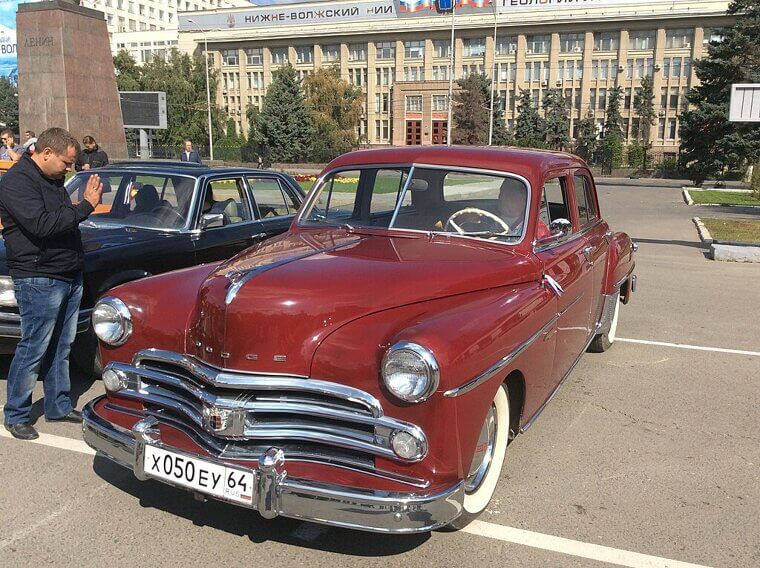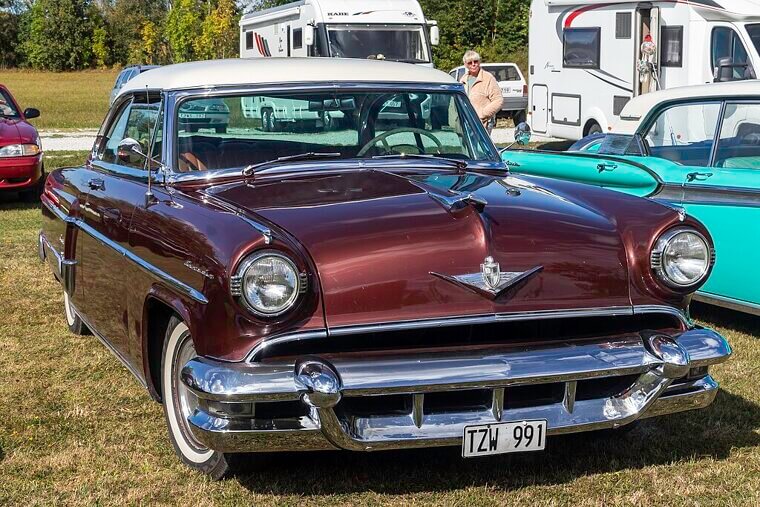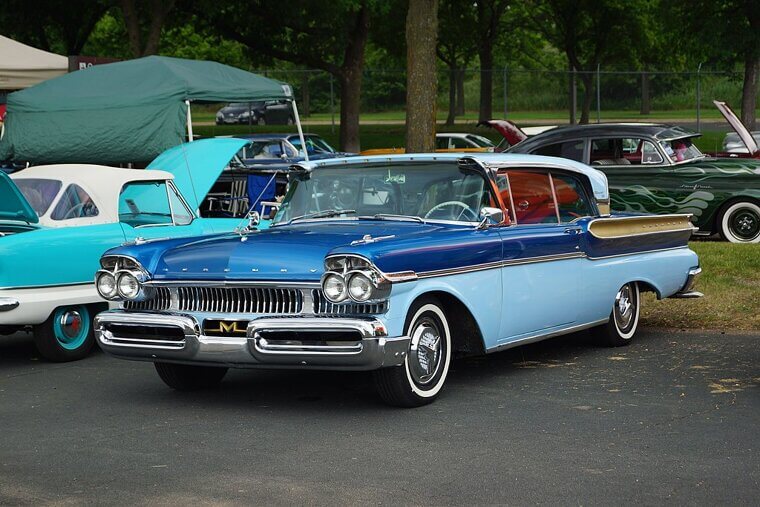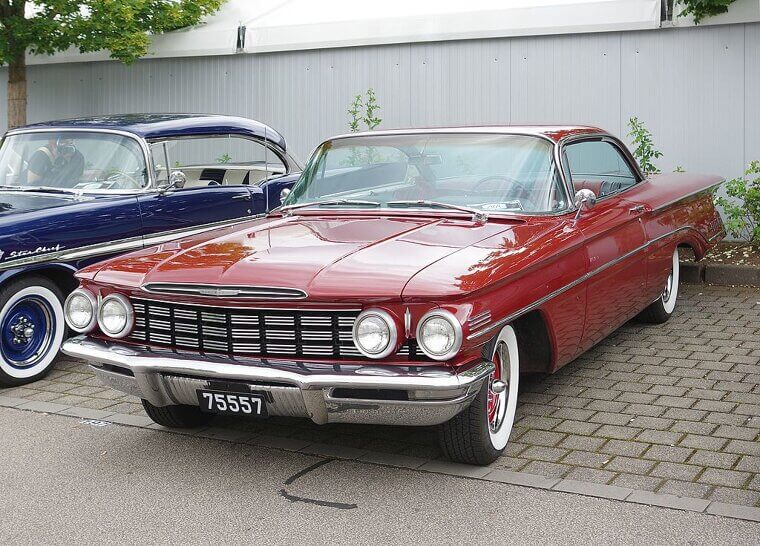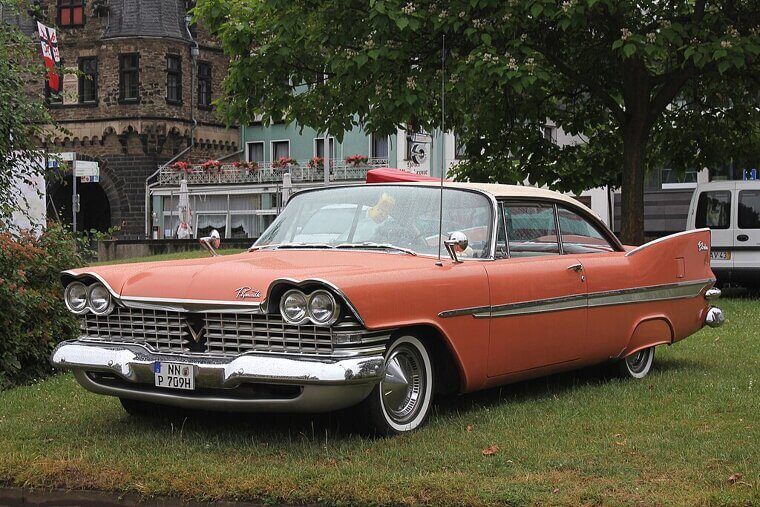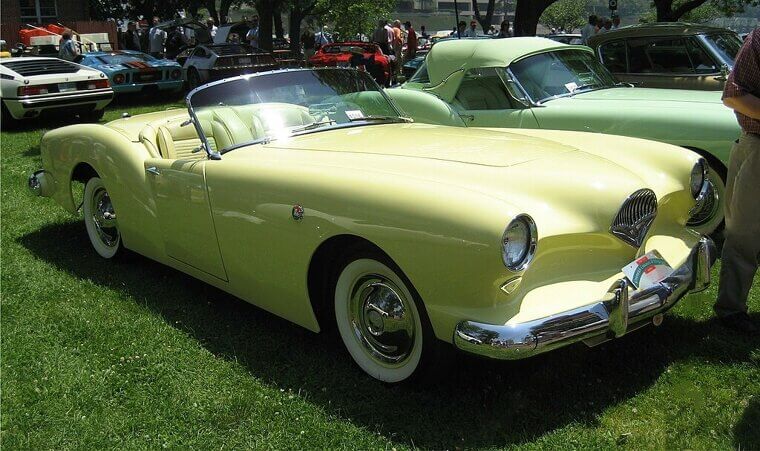Ford Thunderbird (1955)
The Thunderbird was Ford’s answer to the Corvette, but with more romance than rivalry. Sleek, smooth, and confident, it balanced performance with plushness. A car for dreamers in sunglasses, it defined the idea of personal luxury - sporty, stylish, and soaked in starlight.
Chevrolet Bel Air (1955)
Few cars said “American Dream” quite like the Bel Air. Its sweeping lines and glinting chrome smiled at the future. Affordable yet classy, it was the everyman’s Cadillac, cruising diners and drive-ins across the nation. With a powerful V8 under the hood, it turned daily commutes into small parades.
Cadillac Eldorado (1953)
The Eldorado was America’s idea of luxury made metal. With tailfins sharp enough to slice envy, it dripped with elegance and excess. Every inch screamed success: whitewall tires, wraparound windshields, and more chrome than modesty should allow. The Eldorado didn’t just drive; it arrived.
Chevrolet Corvette (1953)
America’s first true sports car, the Corvette was a fiberglass fantasy born from postwar confidence. It looked exotic, futuristic, and just a little dangerous. Though early models weren’t lightning fast, they looked fast enough to make your heart skip. The Corvette launched a legend.
Chrysler 300 (1955)
Nicknamed the “Beautiful Brute,” the Chrysler 300 was elegance with attitude. Packing a 300-horsepower V8 (an outrageous figure for the time), it was the gentleman bruiser of the boulevard. Refined yet rebellious, it bridged the gap between luxury and performance.
Buick Roadmaster (1952)
If swagger could drive, it’d look like the Buick Roadmaster. This rolling statement piece oozed comfort and confidence, with curves that belonged on a sculpture. Inside, it was a lounge on wheels; soft seats, smooth suspension, and a promise that you’d arrived, even if you were only going downtown.
Studebaker Starliner (1953)
The Starliner was futuristic before the future knew what it looked like! Low, sleek, and aerodynamic, it turned heads in an era of boxy sedans. Studebaker dared to dream differently - and for a brief, brilliant moment, it worked! The Starliner looked like tomorrow and made everyone else look outdated.
Oldsmobile 88 (1950)
The Olds 88 blended a lightweight body with a roaring Rocket V8 - the first muscle car in spirit, if not in name. It was fast, flashy, and wildly popular. The 88 wasn’t about subtlety; it was about showing off America’s growing power, one thunderous stoplight at a time.
DeSoto Adventurer (1956)
The Adventurer was Chrysler’s bold experiment in luxury performance, and wow, did it shine. Gold accents, two-tone paint, and a ferocious Hemi engine turned heads everywhere it went. It was a party on four wheels, born from an era when cars didn’t just move - they performed, like rock stars wrapped in steel.
Mercury Monterey (1952)
With its confident stance and cool demeanor, the Monterey was a mid-century mood on wheels. It bridged working-class ambition and high-end flair, making glamour feel attainable. It wasn’t wild or radical, just beautifully assured, the kind of car you drove with an elbow out the window, radio crooning.
Pontiac Bonneville (1957)
The Bonneville rolled out like Elvis in a tux: all swagger and sophistication. It had fuel injection (which sounded like sci-fi back then) and a name that whispered of long roads and longer sunsets. With its two-tone paint and rocket-inspired trim, it was a love song on chrome.
Lincoln Continental Mark II (1956)
Elegant, restrained, and breathtakingly expensive, the Mark II was America’s idea of European grace wrapped in Detroit muscle. Celebrities adored it, presidents approved of it, and it gleamed like starlight in a showroom. This wasn’t a car for everyone - it was for those who’d already made it.
Dodge Coronet (1950)
The Coronet was dependable yet daring, a family sedan with a twinkle in its headlights. It reflected postwar optimism: solid, proud, and ready for a Sunday drive through new suburbs. There was nothing flashy here - just the promise of stability and progress.
Packard Caribbean (1953)
The Caribbean was Packard’s swan song, a parade float of luxury that glittered like a dream. Top-down, pastel-painted, and drenched in chrome, it was the car for coastal drives and champagne weekends. Its name promised escape - to sun-drenched shores, to glamour, to somewhere far from the ordinary grind.
Plymouth Fury (1958)
The Fury lived up to its name: sleek, sharp, and just a little dangerous. It embodied the era’s fascination with speed and style, its fins stretching skyward like ambition itself. Even before Stephen King turned it into a haunted legend, the Fury had a pulse.
Hudson Hornet (1951)
The Hornet was the quiet hero, unassuming yet unstoppable. On the track, it crushed competition with its low center of gravity and straight-six engine. On the streets, it was smooth, confident, and classy. It was a car with dignity; the kind that didn’t need to shout to make everyone look twice.
Nash Ambassador (1950)
The Ambassador was charmingly practical - the kind of car that invited you to a picnic rather than a drag race. Its enclosed wheels and streamlined body gave it a quirky, space-age look while inside, seats folded into a bed - perfect for roadside naps or stargazing. It was innovation wrapped in innocence.
Ford Fairlane (1955)
Named after Henry Ford’s estate, the Fairlane blended family-friendly comfort with a movie-star grin. Two-tone paint, chrome galore, and a V8 that purred like a happy tiger… this was the car for Main Street parades and first kisses at the drive-in. It was the American Dream with tailfins.
Chevrolet Impala (1958)
The Impala was confidence on wheels; wide, low, and dripping in style. With jet-inspired taillights and a cabin that felt like a lounge, it was America’s new luxury for the everyman. You didn’t just drive an Impala - you impressed in one, top down, radio crooning, future wide open.
Rambler American (1958)
The Rambler American was the sensible rebel, small, efficient, and proudly unpretentious. In a decade of extravagance, it winked and said, “less can be more.” It captured a quieter dream: practicality, independence, and the freedom to roam without breaking the bank. It was a modest car with a big, beating heart.
Ford Crown Victoria (1955)
The Crown Vic shimmered with postwar pride with chrome trim gleaming under neon skies. Its signature “Fairlane glass roof” gave passengers a glimpse of the stars, as if driving through space itself. It was dignified yet daring, the kind of car that made small-town Saturday nights feel like Hollywood premieres.
Cadillac Series 62 (1957)
Tailfins like wings, headlights like diamonds - the Series 62 was America’s high society on wheels. Inside, it was as plush as a penthouse suite; outside, pure theater. Every curve announced confidence, every chrome flourish whispered luxury. It was the golden age distilled into a Cadillac, where status met style at 60 mph.
Buick Skylark (1953)
The Skylark was pure optimism, a limited-edition masterpiece celebrating Buick’s 50th anniversary. It flaunted curves, chrome, and class in equal measure. With its top down, it looked like joy itself. Driving one wasn’t just transportation; it was participation in an era that believed beauty could fix almost anything.
Chevrolet Nomad (1955)
Chevy took a station wagon and made it fashionable, turning practicality into pop art and combining sportscar styling with family sensibility. The Nomad was for dreamers who needed to haul groceries and look fabulous doing it - a true icon of the drive-in decade, where even errands had flair and fins.
Chrysler Imperial (1956)
The Imperial was Chrysler’s love letter to opulence, an executive cruiser for the freshly minted elite. Massive, elegant, and unashamedly grand, it seemed built not for highways but parades. Power steering, plush interiors, and tailfins like sculpture made it less a car, more a moving monument to ambition.
Studebaker Golden Hawk (1956)
The Golden Hawk looked ready to leap even when parked. . It was part hot rod, part high society, with design touches that bordered on the divine thanks to a supercharged V8 that gave it wings (literally and figuratively). The Hawk delivered excitement wrapped in elegance, both in golden measure.
Packard Patrician (1954)
Stately and serene, the Patrician was an elder statesman of the road. While other cars flirted with flash, the Packard simply commanded respect. Its craftsmanship was impeccable, its presence undeniable. Even as Packard’s twilight loomed, the Patrician stood tall.
Ford Ranchero (1957)
“More than a car! More than a truck!” Ford boasted - and they weren’t wrong. The Ranchero fused the comfort of a sedan with the utility of a pickup, making it the ultimate do-it-all dream machine. It was perfect for both hauling hay or heading to a honky-tonk.
Chevrolet Cameo Pickup (1955)
Before trucks were cool, the Cameo made them beautiful. Two-tone paint, chrome bumpers, and sleek fiberglass panels gave it a touch of Hollywood charm. It was the working man’s statement piece - a truck for those who wanted to look good while getting things done.
Dodge Royal Lancer (1955)
The Royal Lancer was Dodge’s dashing debutante: elegant, exuberant, and alive with color. Tailfins swooped, chrome gleamed, and interiors glowed in pastel perfection. It wasn’t just a car; it was a moving mural of mid-century optimism.
Lincoln Capri (1952)
The Capri was smooth sophistication with a side of quiet confidence. It wasn’t loud or boastful - it simply knew it was special. With clean lines and a V8 heartbeat, it was both stately and spirited. You could imagine Sinatra behind the wheel, chasing midnight along a rain-slick boulevard.
Mercury Turnpike Cruiser (1957)
This car looked like it drove straight out of The Jetsons. With its futuristic styling and retractable “breezeway” rear window, the Turnpike Cruiser embodied space-age optimism. It was the car for dreamers who believed the highway was just a launch pad.
Oldsmobile Super 88 (1957)
The Super 88 was swagger incarnate. It packed power, polish, and presence - it was the kind of car that made you check your reflection in the chrome. Its rocket badge wasn’t just for show; it symbolized America’s love affair with speed, space, and self-belief.
Plymouth Belvedere (1957)
Bold and beautiful, the Belvedere was pure theater on four wheels. Its tailfins reached for the clouds, its two-tone paint danced in sunlight, and its V8 hummed a promise of adventure. It was a car that said, “The world is ours now, darling. Let’s go find it.”
Kaiser Darrin (1954)
The Kaiser Darrin was a rare, romantic rebel, America’s first fiberglass sports car with doors that slid magically into its fenders. Designed by Dutch Darrin, it was delicate, daring, and heartbreakingly pretty. It didn’t sell many, but oh, it lingered.

